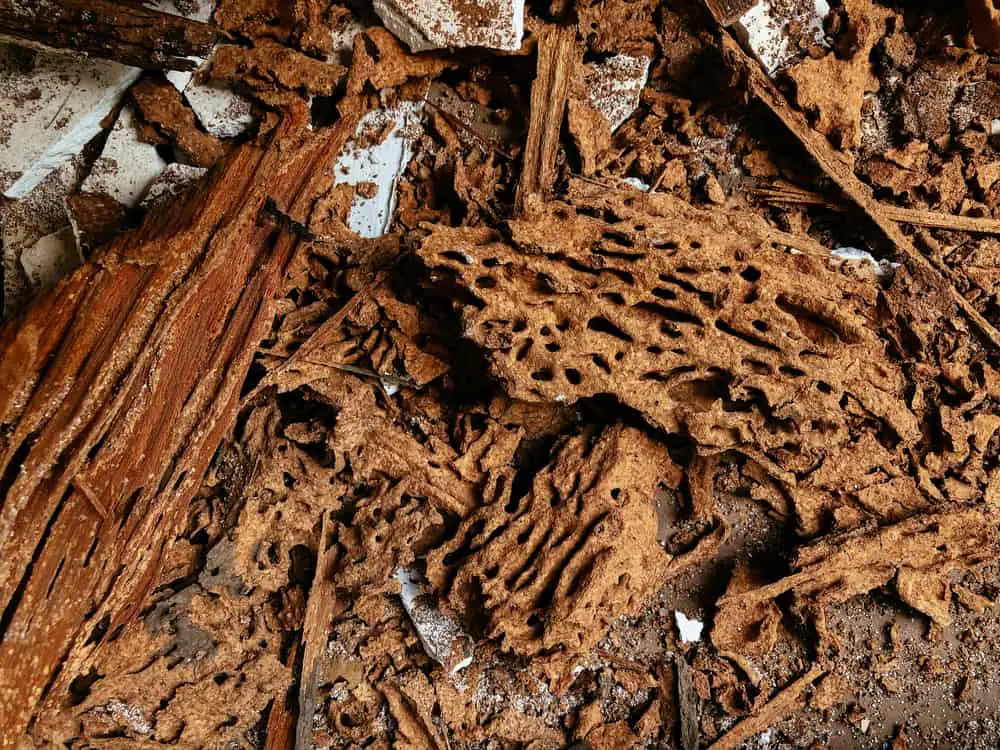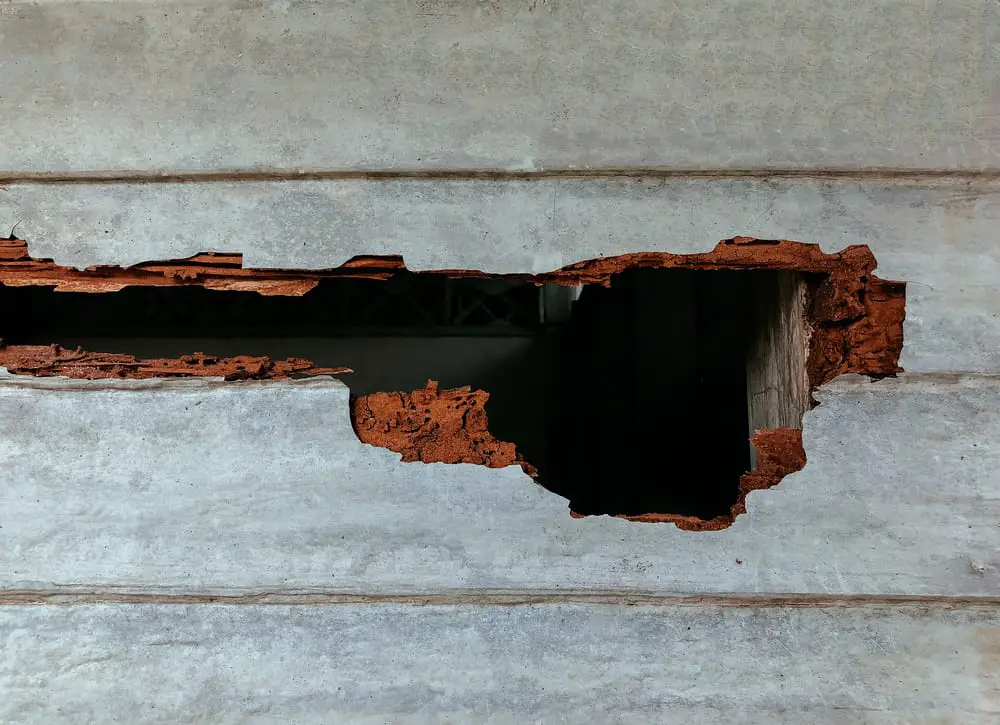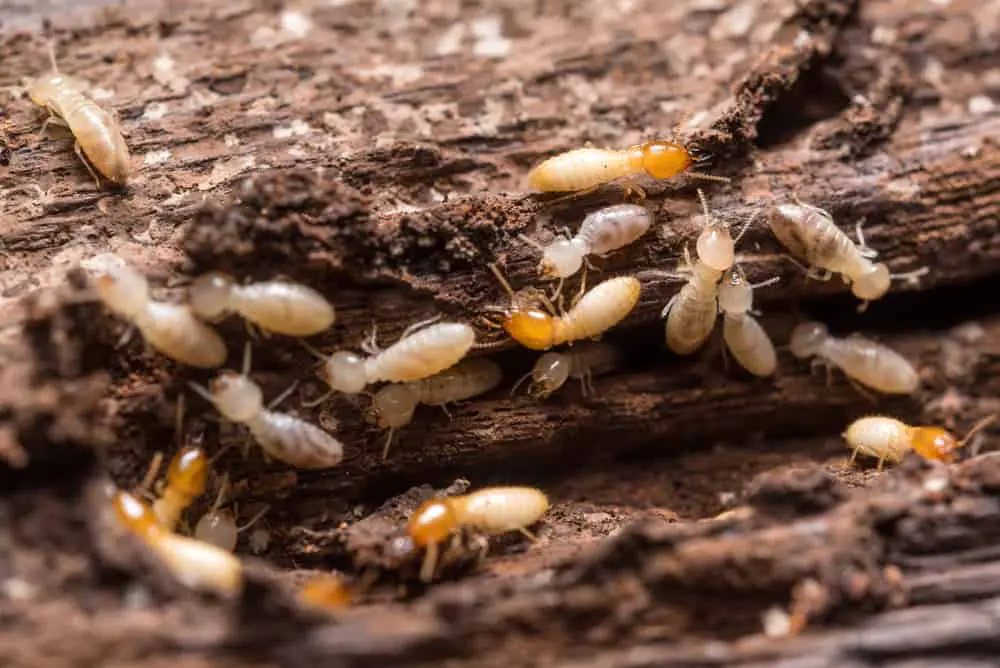As a homeowner, it seems like pests always try to get into my space. From insects to rodents and reptiles, pests big and small want to enter your attics, crawl spaces, and walls. The scariest of pests that creep into our homes is a termite infestation.
Yearly termite inspections are recommended because the cost of termite colonies living in your house is immense. For peace of mind, I have put together some information on options you have to keep your home safe from termites forever.
How Do Termites Tunnel from House to House?
Termites build mud tunnels, and worker termites range as far as 400 ft in search of a food source. It is possible for these insects to go from house to house, but they are more likely to go from food source to food source.
Termite activity leads to swarmers once a year that leave the colony to start their own. They can enter under roofs and in the wood surfaces of a house to begin a new nest. Keeping termites out of your house and off your property can be very difficult to do.
Can Termites Move with You?

Termites exist in wood and soil all over the earth. It is possible to move termites from one location to another with you. If a mating couple of termites from a swarm is alive in the wood, a new colony can be started. A queen moved on wood or clothing can also spread a colony.
Before and after you move into a new home, regardless of the age of the house, a termite inspection is a good idea. Drywood termites will likely live in a piece of wood for cabinetry or construction wood and railroad ties. Inspect your wood first to avoid termite issues and other unwanted guests.
Ways Termites Enter Your Home
With all the ways for termites to enter your home, from tables made of tree trunks to gaps in your roof, it can be hard to keep track of all these breach points. Luckily I put together this table!
| Ways Termites Enter Homes | How to identify Invasion | How to Stop Termite Expansion |
| Subterranean termites enter from soil to wood contact anywhere on the property | Termite infestation will show mud tunnels along foundations and wall cracks | Use bait traps at the top of mud tunnels to kill termites back in the nest |
| Carried Inside on cotton clothing or other cloth | Spot signs of termite activity or active termite colonies near where clothing is stored | Shake off clothes worn while working outside or with cellulose-containing materials |
| Wood brought into the home | boreholes and termite droppings on the wood you brought are signs of termites inside | Remove wood and treat home for termite infestation |
| Attics, roof gaps, and windows while swarming | When colonies of termites get too large, you will see signs of swarming like wings on window sills | Seal all gaps on the exterior of the home and check screens |
| Water-damaged wood and leaky pipes | Look for termite droppings around water pipes and wooden items | Fix all leaks and apply a termite treatment to areas where pests were sighted |
Subterranean Termites
This is the class of termites that will enter your house from below. Using cracks in the ground, moisture near foundations, and crafty mud tunnels, termites can get inside your walls and eat your home.
When you see mud tunnels near the base of your house or any signs of termite damage inside, call a pest control expert. Placing bait outside of their tunnels and removing all wooden food sources can help slow the expansion of the colony.
Brought in on Clothes
Termites, like ants, can hitchhike and survive for a while on their own. Termites could invade if a queen or mating swarmers are brought inside after yard work.
After working with wood or doing outdoor chores shake off your outer layer of clothes to remove any straggling insects. Doing this will decrease the chance of bringing unwanted pests into your home and save some floor cleaning time.
Brought in on Wood
It is easy to transport termites in old pieces of wood, furniture, and DIY projects. A queen or mating termites can create a new colony fast and spread to any other food source in your home. This is common in storage rooms and garages where wood is brought in and then forgotten about.
Attics, Roof Gaps, and Windows
Once a year, the colony splits, and hundreds of termites grow wings and look for another swarming colony. when they meet, they mate, and a new nest is created. These winged termites can fly 250ft from their original colony and follow wind patterns.
If blown under roofs or into open windows, termites will mate, rip off their wings, and build a nest for the new queen. If you see the signs of a termite swarm, you can usually get rid of them easily. If they nest undetected, you could have a serious issue in a few years’ time.
Water-Damaged Wood and Leaky Pipes
Mud tunnels are built with termite spit. All that spit means lots of water. If you let water from your home reach a termite worker, they will move in immediately. Water damage also weakens wood and makes it easier for termites to devour and build into.
Ensure all leaks are fixed, and any wet surfaces are dried with a fan. This will stop your leaks from attracting termites and help prevent mold build-up.
What Attracts Termites to Your House?

Termites are attracted to our homes for three main reasons. They need food, water, and places to spread their colonies. Our homes can offer all of these if we give termites a way in. Getting rid of our termite magnets can help reduce the time spent inspecting every baseboard in our home.
Food Sources: Termites will eat any kind of wood they can sink their mandibles into. Removing wood from around your house, including tree trunks and construction wood, can ward off termite scouts.
Replacing food sources with borax termite powder and other bait wood can help reduce the number of termites on your property to a manageable level. Any wood near your house should not directly contact the soil, and moisture should be removed from the foundation.
Water: Chewing wood is thirsty work; just ask the dam beavers. Termites need a constant supply of fresh water, and your house has lots of it. If you don’t keep it in the pipes where it belongs, then termites will come to drink it.
Fix all leaks and seal all pipes that are creating liquid or condensation in the walls. AC units can also be a source of termite infestation with their constant water exhaust. All gutters and drain spouts should move water away from wooden objects and your home’s foundation.
Colony Expansion: Termites are on a never-ending mission to consume all the wood on the planet. If you don’t stop them, no one will, and their colonies will take over. The wood is the fuel, and the water gives them the material to build giant nests and tunnels.
If you allow termites to spread and do not contain them, they will destroy your entire home and reduce it to dust. Termite inspections and treatments are needed to prevent unidentified colonies from wreaking havoc in your home and on your property.

